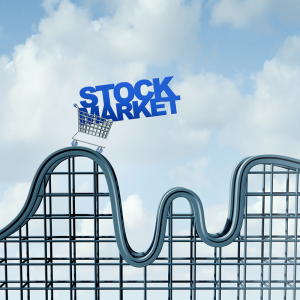Dealing with Investment Volatility … and More
By Jim Terwilliger
 Most investors are familiar with the concept of volatility. But many are not acquainted with the associated concept of “sequence of returns.”
Most investors are familiar with the concept of volatility. But many are not acquainted with the associated concept of “sequence of returns.”
Volatility occurs when investments are exposed to the stock market through individual stocks or stock mutual funds. It is common to see investment portfolios with 70%-100% stock exposure during one’s earning (accumulation) years and 50%-70% exposure during retirement (distribution) years.
The purpose is simple. Stocks offer the opportunity to grow investments at a rate greater than inflation. During accumulation, you want to maximize the size of your nest egg available at retirement. During distribution, you want your nest egg to stay ahead of inflation to minimize the probability of running out of money and to maintain the spending power of your distributions.
So far, so good. But along with stocks providing a potentially-higher return comes the downside factor of risk, with volatility being the primary risk. While stocks historically have risen in value over the long term, the ride is bumpy. This bumpiness (volatility) appears in cycles that can last days, weeks, months, and even years.
For example, during the past 20 years, the S&P 500 index showed a 32.4% gain in 2013 but a 37% loss in 2008. Talk about bumpy! While the average rate of return for the 20-year 1999-2018 period was 7.2%, the compound annualized (effective) return was only 5.6%.
It is the effective return that determines how much money you have at the end of any period. The higher the volatility during that period, the lower the effective return. Volatility is the investor’s enemy.
It is important to understand how volatility and sequence of returns impact investments during the two primary phases of our financial lives. See the following scenarios.
Lump sum investment
This is the simplest scenario. Invest a sum of money and let it grow over a period of time. This might be to fund a specific goal at some point in the future and can occur during either phase of your financial life.
If there is no volatility (such as with a long-term CD), the effective rate of return is equal to the average return and the resulting value is easy to calculate. But, if we had invested $10,000 in an S&P 500 index mutual fund on Jan. 1, 1999, the 20-year compound annualized return of 5.6% would have resulted in a balance of $29,736 on Dec. 31, 2018. Even though the average return over this time period was 7.2%, we would not have achieved a return of 7.2% due to volatility.
For a lump sum investment, sequence of returns does not impact the outcome. If the effective return is 5.6%, the final dollar value is not influenced at all by the order in which the annual returns occur. Volatility matters but sequence of returns does not.
Accumulation phase
This scenario involves using excess cash flow to make annual contributions to retirement and investment accounts. Total portfolio growth is fueled by a combination of contributions and investment returns.
As before, with no volatility, the effective return is equal to the average return and the resulting value is easy to calculate. But, with volatility, the effective return is impacted negatively. Higher volatility over the long timeframe will reduce the ultimate gain.
Further, sequence of returns matters here. Generally, a poor stock market during the early portion of the accumulation period, followed by a strong stock market, results in a bigger nest egg at the time of retirement. Such a sequence yields a higher effective rate of return.
Distribution phase
This scenario involves using money from our retirement / investment portfolios to help fund retirement. Typically, annual distributions would slowly increase to keep pace with inflation.
Again, with no volatility, the effective return is equal to the average return, resulting in no impact. But, with volatility, the effective return is again lower. Higher volatility over the retirement timeframe will result in a nest egg that depletes more rapidly.
Sequence of returns again matters. Generally, a poor stock market during the first portion of retirement, followed by a strong stock market, results in a more-rapidly-depleting nest egg due to a lower effective return.
Note that for the accumulation and distribution phases, the opposite scenario (strong stock market first followed by poor stock market) results in the opposite sequence-of-returns outcome.
In a future column, we will review the implications of the above to the investor and what action can be taken to reduce volatility and sequence-of-returns impacts. In the meantime, it is important for you to be aware of these impacts so that they do not take you by surprise.
James Terwilliger, CFP, is senior vice president, senior planning adviser, CNB Wealth Management, Canandaigua National Bank & Trust Company. He can be reached at 585-419-0670 ext. 50630 or by email at jterwilliger@cnbank.com.
